Unraveling NPR-like Family Genes in Fragaria spp. Facilitated to Identify Putative NPR1 and NPR3/4 Orthologues Participating in Strawberry- Colletotrichum fructicola Interaction
- PMID: 35736739
- PMCID: PMC9229442
- DOI: 10.3390/plants11121589
Unraveling NPR-like Family Genes in Fragaria spp. Facilitated to Identify Putative NPR1 and NPR3/4 Orthologues Participating in Strawberry- Colletotrichum fructicola Interaction
Abstract
The salicylic acid receptor NPR1 (nonexpressor of pathogenesis-related genes) and its paralogues NPR3 and NPR4 are master regulators of plant immunity. Commercial strawberry (Fragaria × ananassa) is a highly valued crop vulnerable to various pathogens. Historic confusions regarding the identity of NPR-like genes have hindered research in strawberry resistance. In this study, the comprehensive identification and phylogenic analysis unraveled this family, harboring 6, 6, 5, and 23 members in F. vesca, F. viridis, F. iinumae, and F. × ananassa, respectively. These genes were clustered into three clades, with each diploid member matching three to five homoalleles in F. × ananassa. Despite the high conservation in terms of gene structure, protein module, and functional residues/motifs/domains, substantial divergence was observed, hinting strawberry NPR proteins probably function in ways somewhat different from Arabidopsis. RT-PCR and RNAseq analysis evidenced the transcriptional responses of FveNPR1 and FxaNPR1a to Colletotrichum fructicola. Extended expression analysis for strawberry NPR-likes helped to us understand how strawberry orchestrate the NPRs-centered defense system against C. fructicola. The cThe current work supports that FveNPR1 and FxaNPR1a, as well as FveNPR31 and FxaNPR31a-c, were putative functional orthologues of AtNPR1 and AtNPR3/4, respectively. These findings set a solid basis for the molecular dissection of biological functions of strawberry NPR-like genes for improving disease resistance.
Keywords: NPR-like family; anthracnose; expression profile; phylogeny; strawberry.
Conflict of interest statement
The authors declare no conflict of interest. The funders had no role in the design of the study; in the collection, analyses, or interpretation of data; in the writing of the manuscript; or in the decision to publish the results.
Figures
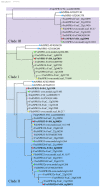
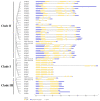
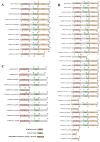
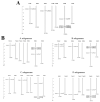

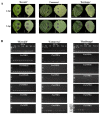

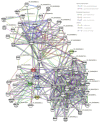
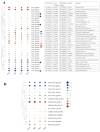


Similar articles
-
FaNPR3 Members of the NPR1-like Gene Family Negatively Modulate Strawberry Fruit Resistance against Colletotrichum acutatum.Plants (Basel). 2024 Aug 14;13(16):2261. doi: 10.3390/plants13162261. Plants (Basel). 2024. PMID: 39204697 Free PMC article.
-
Identification of a strawberry NPR-like gene involved in negative regulation of the salicylic acid-mediated defense pathway.PLoS One. 2018 Oct 12;13(10):e0205790. doi: 10.1371/journal.pone.0205790. eCollection 2018. PLoS One. 2018. PMID: 30312354 Free PMC article.
-
Genome-wide analysis of LysM gene family members and their expression in response to Colletotrichum fructicola infection in Octoploid strawberry(Fragaria × ananassa).Front Plant Sci. 2023 Jan 23;13:1105591. doi: 10.3389/fpls.2022.1105591. eCollection 2022. Front Plant Sci. 2023. PMID: 36756233 Free PMC article.
-
Characterization of expansin genes and their transcriptional regulation by histone modifications in strawberry.Planta. 2021 Jul 3;254(2):21. doi: 10.1007/s00425-021-03665-6. Planta. 2021. PMID: 34216276 Review.
-
Tell me more: roles of NPRs in plant immunity.Trends Plant Sci. 2013 Jul;18(7):402-11. doi: 10.1016/j.tplants.2013.04.004. Epub 2013 May 15. Trends Plant Sci. 2013. PMID: 23683896 Review.
Cited by
-
FaNPR3 Members of the NPR1-like Gene Family Negatively Modulate Strawberry Fruit Resistance against Colletotrichum acutatum.Plants (Basel). 2024 Aug 14;13(16):2261. doi: 10.3390/plants13162261. Plants (Basel). 2024. PMID: 39204697 Free PMC article.
References
-
- Saleh A., Withers J., Mohan R., Marqués J., Gu Y., Yan S., Zavaliev R., Nomoto M., Tada Y., Dong X. Posttranslational Modifications of the Master Transcriptional Regulator NPR1 Enable Dynamic but Tight Control of Plant Immune Responses. Cell Host Microbe. 2015;18:169–182. doi: 10.1016/j.chom.2015.07.005. - DOI - PMC - PubMed
Grants and funding
LinkOut - more resources
Full Text Sources
Miscellaneous

